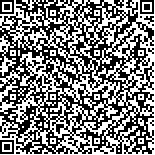王芳,王改兰,朱莹,等.姜黄素介导的光动力疗法通过PI3K/AKT信号通路对PDGF-BB诱导的血管平滑肌细胞增殖的影响[J].中华物理医学与康复杂志,2024,46(5):393-400
扫码阅读全文

|
| 姜黄素介导的光动力疗法通过PI3K/AKT信号通路对PDGF-BB诱导的血管平滑肌细胞增殖的影响 |
|
| |
| DOI:10.3760/cma.j.issn.0254-1424.2024.05.002 |
| 中文关键词: 姜黄素 光动力 血小板衍生生长因子 血管平滑肌细胞 增殖 |
| 英文关键词: Curcumin Photodynamic therapy Platelet-derived growth factor BB Vascular smooth muscle cells Cell proliferation |
| 基金项目:国家自然科学基金资助项目(81871853);重庆市自然科学基金资助项目(cstc2020jcyj-msxmX0484) |
|
| 摘要点击次数: 3211 |
| 全文下载次数: 3428 |
| 中文摘要: |
| 目的 观察姜黄素(CUR)介导的光动力疗法(PDT)通过磷酸酰肌醇3-激酶(PI3k)/丝苏氨酸蛋白激酶(AKT)信号通路对血小板衍生生长因子-BB(PDGF-BB)诱导的血管平滑肌细胞(VSMCs)增殖的影响及其可能的作用机制。 方法 分别选取大鼠胸主动脉平滑肌细胞系(A7R5)和小鼠主动脉平滑肌细胞系(MOVAS)进行平行实验,选择20 μg/L的PDGF-BB诱导VSMCs增殖。将培养好的VSMCs分为对照组、PDGF-BB组、姜黄素组、光动力组,其中光动力组再根据照射剂量的不同,又分为低剂量光动力组(照射60 s)、中剂量光动力组(照射120 s)、高剂量光动力组(照射180 s),共3个亚组。对照组不予任何刺激,PDGF-BB组饥饿过夜后加入含20 μg/L的PDGF-BB的新鲜培养基刺激24 h,姜黄素组先给予与PDGF-BB组相同的干预,然后换液加入含20 μmol/L CUR的新鲜培养基刺激6 h,光动力组先给予与姜黄素组相同的干预,再换液后采用425 nm激光对光动力组各亚组进行对应时长的激光照射。采用细胞活力检测法(CCK8)检测光动力组中不同激光剂量照射后,VSMCs的存活率;然后采用5-乙炔基-2′-脱氧尿苷(EDU)阳性标记率法检测4组细胞的增殖活性,采用流式细胞术对4组细胞进行细胞周期检测,采用Western blot法检测PI3K/AKT通路相关磷酸化蛋白和细胞增殖核蛋白(PCNA)的表达水平。 结果 经CCK8法检测,本研究选择120 s作为激光照射的最佳剂量。干预后,中、高剂量光动力组的细胞存活率与PDGF-BB组比较,差异均有统计学意义(P<0.01)。光动力组增殖的阳性细胞比例显著低于PDGF-BB组,差异有统计学意义(P<0.05)。光动力组细胞在G0/G1期的比例明显低于对照组(P<0.01),而在G2/M期的比例则明显高于对照组和PDGF-BB组(P<0.01)。光动力组增殖细胞核抗原(PCNA)、PI3K/AKT通路磷酸化蛋白的表达较PDGF-BB组显著下降,差异均有统计学意义(P<0.01)。 结论 CUR介导的PDT可抑制PDGF-BB诱导下的血管平滑肌细胞的增殖,其机制可能与CUR介导的PDT可下调PI3K/AKT通路相关磷酸化蛋白表达水平有关。 |
| 英文摘要: |
| Objective To observe any effect of photodynamic therapy (PDT) mediated by curcumin (CUR) on the proliferation of vascular smooth muscle cells (VSMCs) induced by platelet-derived growth factor-BB (PDGF-BB) through the phosphatidylinositol 3-kinase (PI3k)/serine threonine protein kinase (AKT) signaling pathway and explore its possible mechanism. Methods Twenty μg/L of PDGF-BB was used to induce proliferation of VSMCs in A7R5 rat aortic smooth muscle cells and mouse aortic smooth muscle cells. Well-cultured VSMCs were randomly divided into a normal group, a PDGF-BB group, a curcumin group, and a low-dose PDT group (irradiated for 60s), a medium-dose PDT group (irradiated for 120s), and a high-dose PDT group (irradiated for 180s). The normal group was not given any intervention, and the PDGF-BB group was starved overnight and then stimulated for 24h by adding fresh medium containing 20μg/L of PDGF-BB. The curcumin group was first given the same intervention as the PDGF-BB group, and then placed in a medium containing 20μmol/L of curcumin for 6h. The PDT groups were first given the same intervention as the curcumin group, and then irradiated using a 425nm laser after removal of the medium. A CCK8 cell counting kit was used to detect the survival rate of VSMCs in the PDT groups after irradiation with the different laser doses. VSMC proliferation was detected using 5-ethynyl-2′-deoxyuridine (EDU) positive labeling. The cell cycle was observed using flow cytometry, and the expression levels of related phosphorylated proteins of the PI3K/AKT pathway and proliferating cell nuclear antigen were detected using western blotting. Results The CCK-8 counts suggested that 120s was the optimum irradiation dose. The cell survival rates in the medium-dose and high-dose PDT groups were significantly different from the PDGF-BB group′s average. The proportion of proliferating cells in the PDT groups was significantly lower than in the PDGF-BB group. The proportion of cells in the G0 or G1 phase was significantly lower in the PDT group than in the normal group, while that in the G2 or M phase was significantly higher than in the normal and PDGF-BB groups. The expression of proliferating cell nuclear antigen and the phosphorylated proteins of the PI3K/AKT pathway had decreased significantly in the PDT group compared with the PDGF-BB group. Conclusion CUR-mediated PDT inhibits PDGF-BB-induced proliferation of vascular smooth muscle cells, probably by down-regulating the expression of phosphorylated proteins related to the PI3K/AKT pathway. |
|
查看全文
查看/发表评论 下载PDF阅读器 |
| 关闭 |